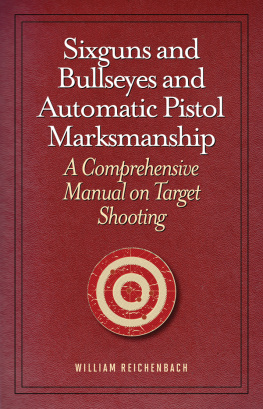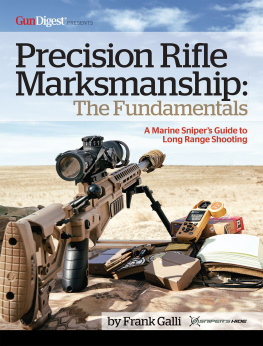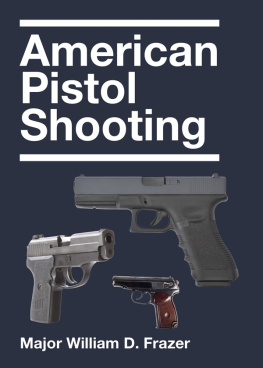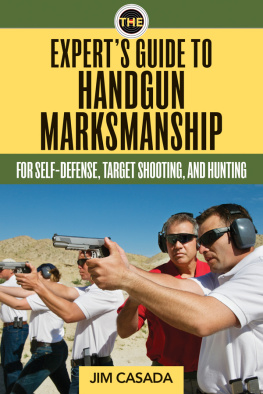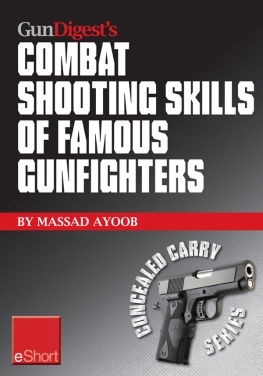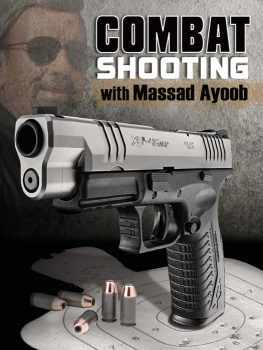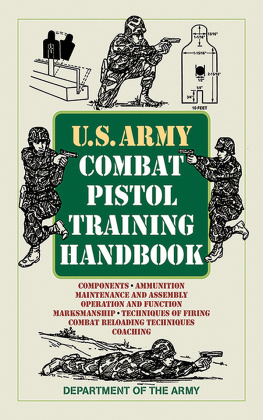

"My troops are good and well-disciplined, and the most important thing of all is that I have thoroughly habituated them to perform everything that they are required to execute. You will do something more easily, to a higher standard, and more bravely when you know that you will do it well."
Frederick the Great, Principes Generaux, 1748






CHAPTER 1
CHAPTER 2
CHAPTER 3
......... 15
CHAPTER 4
...................... 19
CHAPTER 5
CHAPTER 6
CHAPTER 7
CHAPTER 8
CHAPTER 9
................ 59
CHAPTER 10
CHAPTER 11
CHAPTER 12
CHAPTER 13
CHAPTER 14
......... 103
CHAPTER 15
CHAPTER 16
.......... 123
CHAPTER 17
CHAPTER 18
............. 143
CHAPTER 19
............... 151
CHAPTER 20
............. 165
CHAPTER 21
............ 175
CHAPTER 22
................ 181
APPENDIX A
.................. 187
APPENDIX B
........................ 191
APPENDIX C
.................... 193

Firearms are potentially dangerous and must be handled responsibly by individual trainees and experienced shooters alike. The technical information presented here on firearms handling, training, and shooting inevitably reflects the author's beliefs and experience with particular firearms and training techniques under specific circumstances that the reader cannot duplicate exactly. Therefore, this book is presented for academic study only. It is not intended to serve as a replacement for professional instruction under a qualified firearms instructor.

This book is not about pistols. Rather, it is a book about how to become an accomplished shooter. Most specifically, it's intended as a companion text to my first book, The Tactical Pistol. In that book, I told you what needs to be done. In this book, I show you exactly how to do it.
As you read, you will notice that there is little discussion of such issues as mind-set, tactics, and tactical applications. There are many other volumes on those topics, the best of which are listed in Appendix C. This is a book about skill development. I will discuss many new concepts in pistol shooting, and I will give you a training program that will make you a better shooter. A bold statement? Perhaps, but the results will speak for themselves. The basic concepts and training drills described herein form the basis of the training programs used in many world-class shooting schools where I, and many of my colleagues, have taught in past years. Some of the material is accepted knowledge in the industry, but much of it is new.
These foundational skills, which many shooters do not understand, are essential to hitting your adversary before he hits you. Make no mistake: an elderly home defender, a citizen with a concealed carry permit, or a high-speed/low-drag oper ator must rely on the fundamental skills to hit their targets, lest they miss and are themselves hit. When your tactics fail (and eventually they will), the only thing standing between you and a grim future will be your, marksmanship skills.
I've given you all the "secrets" here. The rest is up to you. You cannot take a magic pill and become a world-class gunfighter, any more than you can become a world-class anything that way. It takes hours of effort, gallons of sweat, and yes, maybe even a little blood. In this book, I've shown you where to focus your efforts. Study with an open mind, and practice the drills. I suspect that you will notice a big improvement in your shooting within a short period of time.
-Gabe Suarez
Southern California

As usual, no book is the work of a single individual. There are a number of individuals who provided "pieces of the puzzle" through the years and who've contributed greatly in the development and understanding of many of these concepts.
First of all, I must mention my friend and pistolcraft mentor, Col. Jeff Cooper. I began training with Colonel Cooper in the late 1980s, and the knowledge I gained from him was not only the foundation of my pistol skills but also the stuff that actually saved my life on a few occasions.
I must also thank my wife, Cheryl, who has endured the best and the worst. Finally, and perhaps most of all, I must thank my friends at Paladin Press for their help and assistance with my many writing endeavors.

As we stand at the threshold of a new millennium, we see that the human race has not changed much in the last 3,000 years. The things that motivate us today are the same things that motivated our hairy ancestors in the dim past. Times certainly do change, but people and their motivations do not. Julius Caesar, for example, would be incredulous at the sight of an M 1 Abrahms tank rolling into battle, but he would completely understand the motivations of its operators.
Humans are, for the most part, noble and good, but they are also quite capable of unspeakable acts. The history of man is the story of one man's or one nation's aggression against another. Since our forebears first ventured down from the trees, men have been fighting to take what they desired from their weaker neighbors or to protect that which was theirs from the oftentimes stronger marauder. This was true in the green wooded past, and it is true in our concrete and asphalt present.
In ancient (and not so ancient) times, the physically strongest often carried the day. But that all changed with the invention of gunpowder and its application in the firearm. With the gun as a hand-held weapon, man had a tool whereby the weak could overcome the strong or the few could overcome the many.

Early weapons were unreliable and clumsy artifacts by modern standards. The one-shot-and-reload concept did not offer much of an advantage. After the shooter fired his first shot, he was either forced to reload (time consuming and very difficult) or things deteriorated to the Stone Age tactics of hacking and slashing.
Next page


